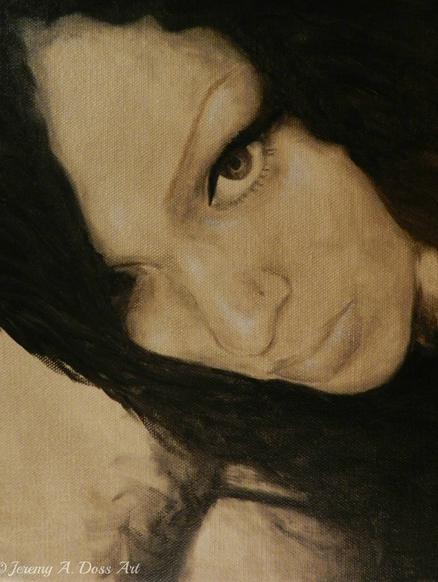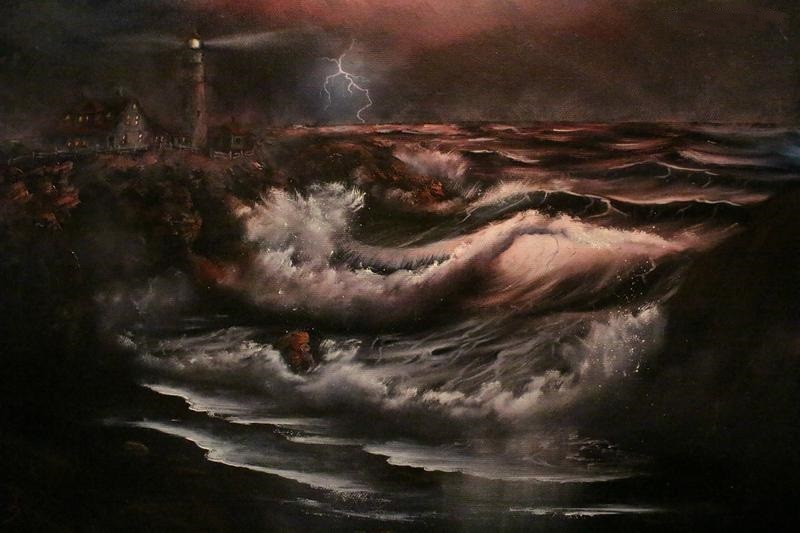Scenescapes
J. Allyn Doss Artist
www.scenescapes.org
An Excerpt from My Portrait Journal ~
Art Philosophy
There are no hard and fast answers to this query of finding one’s self as an artist. You will find that this is a life-long journey. As you grow and change as a person so will your art. Pablo Picasso went through many changes in his art and personal life for example. He went through what has been dubbed a “blue period”, a period marked by melancholic subject matter and dark blue colors. Every time he had a new relationship in his life, or other significant life changes, his art changed. He started out early in life as a realist, trying to capture stunning art in a realistic style. Toward the end of his life however, his art became almost “cartoonish” and was rendered in an impressionistic cubism style that would eventually become famous.
I currently see my art through the eyes of a tonalist / realist; but who knows … there could be an impressionist in there somewhere trying to surface. Only time will tell for me, as it will for you. Art is a very individual thing. Don’t let the opinions of others affect you too much. The whole idea of art is to “say the things you truly feel” as once sang by Sinatra.
Two Parts to Art
To me, there are two parts to art. One is the “science” of art, the other is the “art” of art – if you will. Some artists immerse themselves in the science of art; that is to say studying subjects such as color theory, drawing courses, point perspective, value, anatomy and etc. On the other hand, there are those artists who seem to want to “skip all that” and get to the art. Sometimes we refer to these “artists” as abstract artists. lol Don’t get me wrong, there is some abstract art that I enjoy. But usually the artists that seem to truly have an impressive way of rendering abstract art also have a history in learning traditional art. Yes, art is a personal thing; but mere splotches of paint on a canvas is not something that I’m interested in. There is mediocre art, then there is good art, then there is GREAT art. Becoming a skilled artist does not come cheaply. It takes time and effort to truly capture ones personality onto the canvas. Sure, some artists may render a great impasto work of art in a couple hours …. But I guarantee that his/her ability to do so did not come from just “a couple hours of study” … it came from a lifetime of study.
Let me encourage you to learn everything you can about the science of art. It can only help and will never hurt. First learn the rules … then later you can bend or even break them if you so desire. This will only make you a better artist. There is far more to the science than what I’ve written here. This is just a bare bones guide to my portraiture method. There is a whole other world of concepts … composition, negative space, color theory etc.
Hyper-realism and Photo-realism
As an artist, I am influenced by a number of different techniques, styles and methods. I’m influenced by tonalism, realism and some impressionism; but I lay claim to none of them and do not relish being ‘labeled as’ or ‘compared to’ as such. One area of confusion people seem to have are the concepts of ‘realism’ vs ‘photo realism’. There are those artists out there who seem to render very photo-like realistic pencil and charcoal drawings for example. Then they brag about putting 300 working hours into a piece. First off, I’m NOT a photo realist and I’ll tell you why. For starters, who in their right mind has 300 hours to devote to one piece of art? But time factor is not the only reason I do not profess hyper or photo realism.
There is definitely something to be said for this type of skill. But in my view, there is actually very little emotional impact in this type of work. When we see a hyper realist’s work, we often say “wow that is really good.” But then, since it looks like a photograph taken with a camera … there is very little personality, grit or emotion captured or inherent in the piece. It is more of a science than an art. When you look at a work painted by Van Gogh, Rembrandt or any of the old masters … you FEEL it in your gut. They had what we sometimes refer to today as the “X factor”. A performer, musician, writer, or artist, who may or may not be so advanced in technique … but can communicate something powerfully with emotion… something that strikes a chord and resonates deeply within us.
I’m not interested in producing what a camera can already produce. Why spend “300 working hours” producing what a camera could in a spilt second? I’m more interested in the scratches, smudges, little imperfections and outright distortions that give a piece emotion, grit and beauty. "Perfectly imperfect" if you will... a beautiful painting is like a beautiful woman. If you look at some of my pieces, you may notice that some of the lines, temperatures or tones are either exaggerated, subdued or slightly distorted. Sometimes it is done on purpose, sometimes it could be the subconscious, but it is my vision through my eyes. We all see “reality” differently from each other, and individual views of reality are as different as the individuals themselves. Some may notice more of the color red for example because they are partial to it. This is the gift that the true artist presents – the ability to see the world through his/her eyes. I do not want to see art through the eye of a camera lens (unless it’s photography), I want to see art through the eyes of the artist.
“Art does not reproduce what we see; rather, it makes us see.” ~ Paul Klee
Impasto painter Noel Gregory had this to say, “Photographs do not always capture the intensity of light, the subtlety of tone, the shadows, depth or texture. A painting can portray all these things and more."
To add to this perspective, I submit that a painting should be SUPERIOR to a photo in certain respects. It is through the filter of our biased vision that we see our version of “reality”. It is biased through our own emotion, our intellect, our prejudice, our likes and dislikes, our pain or pleasure. It is a complement for an artist to be told, “You have captured and painted the soul of the sitter.” However, when we see a piece like this, we are also seeing into the soul of the artist. It is said that the camera doesn’t lie ….and I say neither do brushstrokes; they just speak a different language.

